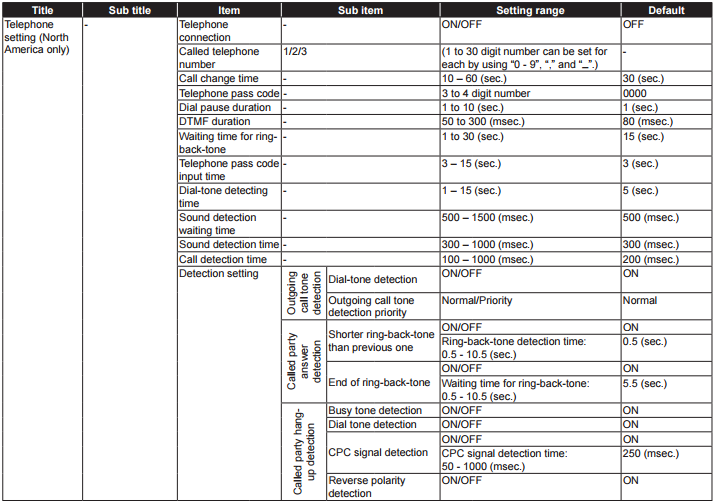Summary
An explanation on telephone settings with the IS Series used with an IS-IPC.
Solution
The following settings can be made for communicating with a telephone. Use this function with the default setting: however, some features may not operate correctly depending on the exchange, PBX, etc. In that case, you may need to change the corresponding setting below.

- Telephone connection – set whether or not to communicate with a telephone.
- Called telephone number – enter up to three 1 – 30-digit telephone numbers. You may use “,” when a pause is required, for example, dialing an extension after the initial telephone number.
- Call change time – set the time for changing call to the next telephone number when the call is not answered from the current number.
- Telephone pass code – set the code used for door release operation/chime input operation.
- Dial pause duration – set the duration between the outgoing call number and telephone number.
- DTMF duration – set the dial tone sending time.
- Waiting time for ring-back-tone – set the waiting time for ring-back-tone.
- Telephone pass code input time – set the time-out period of inputting the telephone pass code for one digit.
- Dial-tone detecting time – set the dial-tone detecting time.
- Sound detection waiting time – set the waiting time for sound detection.
- Sound detection time – set the sound detecting time.
- Call detection time – set the call detecting time.
Detection Settings
Detecting settings are used for detecting the outgoing call. Below is a brief description of each setting.
- Dial-tone detection – set to ON to detect a dial-tone and send the outgoing call number. Set to OFF to confirm the connection of an exchange and then send the outgoing call number.
- Outgoing call tone detection priority – give priority to either exchange signals or sound detection as the method for detecting an outgoing call tone.
- Busy tone detection – set detection to ON/OFF if a busy-tone received from the exchange will end communication.
- Dial tone detection – set detection to ON/OFF if a dial-tone received from the exchange will end communication.
- CPC signal detection – set detection to ON/OFF if a CPC signal from the exchange will end communication. Indicates that the “calling party” has hung up. Make sure to set the “CPC signal detection time” when set to ON.
- Reverse polarity detection – set detection to ON/OFF depending on the polarity of your telephone line. Toggling this may be a troubleshooting method if you are unsure of the line polarity.